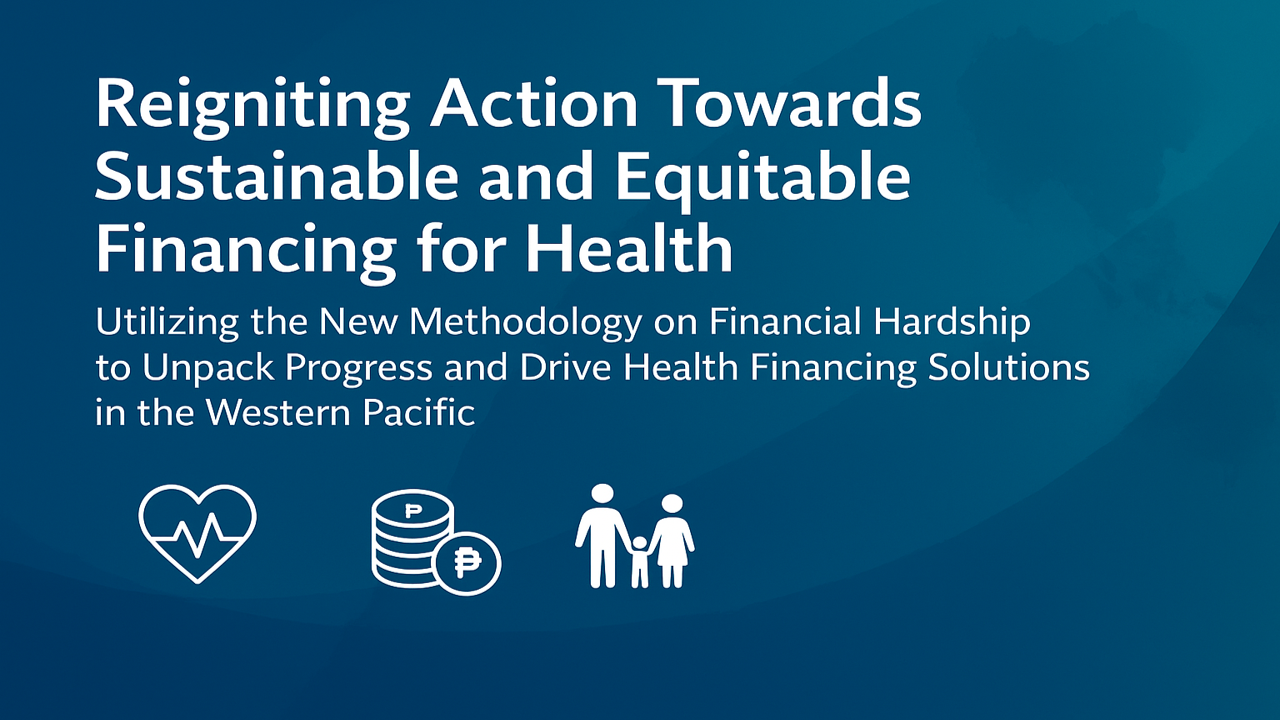Side Meetings
SMB210
Reigniting action towards sustainable and equitable financing for health: Utilizing the new methodology for financial hardship due to health to unpack current progress and drive health financing solutions in the Western Pacific
27
Jan
- World Health Organization (WHO)
- Asian Development Bank (ADB)

Over the past ten years, the WHO Western Pacific Region has made notable progress toward achieving Sustainable Development Goal targets, particularly in enhancing the availability and accessibility of essential health services. This advancement has largely been driven by increased public investment in the health sector due to economic growth. Countries in the Region have adopted health financing strategies that broadened population coverage under national health-care schemes and strengthened fund pooling mechanisms, enabling more effective mobilization of resources for health.
Despite this, the Region is seeing a worsening trend of financial protection, with increasing incidence of catastrophic health spending due to out-of-pocket payments especially for poor, older, and vulnerable populations. In 2017, a WHO regional report on financial hardship due to health highlighted that one in five households, amounting to 385 million people, had catastrophic health spending. In at least three countries in the region, over 20% of households with older persons incurred catastrophic spending. Evidence suggests the incidence of financial hardship and foregone care was highest among households in the poorest quintiles and in rural areas.
Concurrently, countries in the Western Pacific are also experiencing demographic, health and socio-economic transitions. By 2030, half of the countries and areas in the Region have already become or will be aging societies. Non-communicable diseases are expected to account for between 75 to more than 90% of total deaths in the region by 2040. These growing burdens, along with new health security threats and challenges, are occurring in the wake of macrofiscal and economic constraints post-COVID-19 and shrinking overseas development assistance. These issues exacerbate existing health system and financing bottlenecks to support progress towards universal health coverage, especially in addressing the negative direction of financial hardship.
In 2025, the UN Inter-Agency and Expert Group on SDG Indicators revised the official indicator’s methodology to measure the share of the population incurring financial hardship due to both large and impoverishing out-of-pocket health spending. The revision is intended to be more sensitive to spending at the lowest quintiles and would likely impact the estimates for other socioeconomic indicators. This change is a critical opportunity to reignite the discussions around sustainable and equitable financing. To facilitate this, the WHO Western Pacific Regional Office will be analyzing the new estimates, especially to understand the drivers of financial hardship.
- Provide insights into and lessons learned from the global and regional trends for financial hardship due to health based on the new methodolody for the UHC SDG 382 indicator.
- Share country experiences from Indonesia, Mongolia, the Philippines, Malaysia and/or others (TBC) to address these challenges.
- Explore solutions within the health sector and beyond.

